 Technology
Technology  Technology
Technology  Humans
Humans 10 Everyday Human Behaviors That Are Actually Survival Instincts
 Animals
Animals 10 Animals That Humiliated and Harmed Historical Leaders
 History
History 10 Most Influential Protests in Modern History
 Creepy
Creepy 10 More Representations of Death from Myth, Legend, and Folktale
 Technology
Technology 10 Scientific Breakthroughs of 2025 That’ll Change Everything
 Our World
Our World 10 Ways Icelandic Culture Makes Other Countries Look Boring
 Misconceptions
Misconceptions 10 Common Misconceptions About the Victorian Era
 Mysteries
Mysteries 10 Strange Unexplained Mysteries of 2025
 Miscellaneous
Miscellaneous 10 of History’s Most Bell-Ringing Finishing Moves
 Technology
Technology Top 10 Everyday Tech Buzzwords That Hide a Darker Past
 Humans
Humans 10 Everyday Human Behaviors That Are Actually Survival Instincts
 Animals
Animals 10 Animals That Humiliated and Harmed Historical Leaders
Who's Behind Listverse?

Jamie Frater
Head Editor
Jamie founded Listverse due to an insatiable desire to share fascinating, obscure, and bizarre facts. He has been a guest speaker on numerous national radio and television stations and is a five time published author.
More About Us History
History 10 Most Influential Protests in Modern History
 Creepy
Creepy 10 More Representations of Death from Myth, Legend, and Folktale
 Technology
Technology 10 Scientific Breakthroughs of 2025 That’ll Change Everything
 Our World
Our World 10 Ways Icelandic Culture Makes Other Countries Look Boring
 Misconceptions
Misconceptions 10 Common Misconceptions About the Victorian Era
 Mysteries
Mysteries 10 Strange Unexplained Mysteries of 2025
 Miscellaneous
Miscellaneous 10 of History’s Most Bell-Ringing Finishing Moves
10 ‘Where Are They Now’ Stories Of Infamous Criminals
It has been said that crime doesn’t pay, although presumably criminals disagree. Throughout history, many have decided not to play by the rules and either won big or lost heavily. But what happened to history’s most notorious men and women after their lawbreaking days were over?
10The Kidnapper Of Frank Sinatra Jr. Is A Wealthy Businessman
On December 8, 1963, Frank Sinatra Jr., the 19-year-old son of legendary entertainer Frank Sinatra, was performing in a hotel in Lake Tahoe, Nevada. That night, a knock on his dressing room door introduced him to demented gunman Barry Keenan, who proceeded to kidnap him and demand a $240,000 ransom. (Frank Sinatra Sr. actually offered $1 million, but Keenan insisted on $240,000.)
Born in 1940, Barry Keenan grew up to a life of privilege. In fact, he was a friend of Nancy Sinatra and had met Frank Sr. on several occasions. A rising star in the business world, Keenan became the youngest member of the Los Angeles Stock Exchange at just 21. However, a 1961 car accident left Keenan debilitated and addicted to the painkiller Percodan. Penniless, alcoholic, and drug-addled, Keenan decided to perform his most lucrative business deal of his life—“borrowing” Frank Sinatra Jr. At the time, Keenan didn’t consider the kidnapping a crime, since he planned to invest the ransom and then pay it back with interest.
Naturally, his plan didn’t quite work out and the FBI soon arrested him and his accomplices. Keenan initially received a hefty sentence but served less than five years due to being judged legally insane at the time of the crime. During his trial, Keenan falsely suggested Sinatra Jr. had organized his own kidnapping as a publicity stunt, a lie that he now calls his “biggest regret.”
After his release, Keenan returned to business and became a real estate developer. After making and losing a $17 million fortune, Keenan successfully quit drinking and using drugs. He now runs several charities to help addicts achieve sobriety, and his business interests have once again made him a wealthy man. He is also an advocate for criminal justice reform, arguing that while he had wealthy friends to help him get back on his feet, many inmates “come out of prison with nothing but $50, a bus ticket, and the clothes on their back. What chance do they have of going straight? What do you think they’re gonna do when that $50 is gone?”
9New York Madam Polly Adler Wrote A Memoir
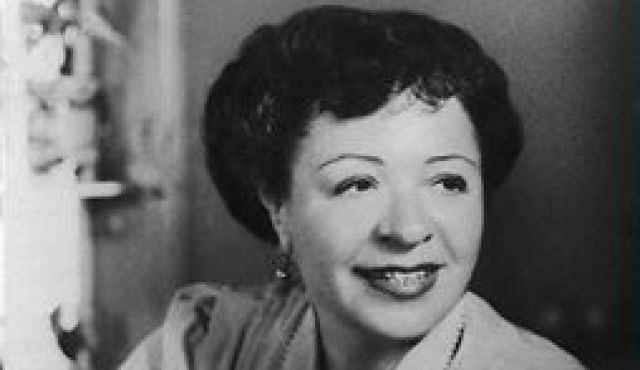
While living on the seedier side of New York City, Russian immigrant Polly Adler met a bootlegger who paid to use her apartment for some personal time with his girlfriend. From such humble beginnings an empire was born. Soon, Adler was running New York’s most famous bordello, where gangsters like Lucky Luciano and Dutch Schulz mixed with businessmen and even Mayor Jimmy Walker. Dorothy Parker was known to drop by for a drink and columnist Robert Benchley would always check in when he had a deadline to meet, telling Adler that the service there was better than the Waldorf. It’s been suggested that Judge Joseph Crater, who famously went missing in 1930, might have had a heart attack while with one of Adler’s girls, forcing her to dispose of the body to avoid a scandal.
When the Seabury Commission was set up to investigate corruption in New York, Adler went on the run for six months but was found and forced to testify in 1931. Although she avoided a conviction, several of her police contacts were jailed for taking bribes. Ironically, this actually made Adler’s life easier, since she no longer had to split her profits with law enforcement. Business flourished until 1936, when Fiorello LaGuardia was elected mayor on a promise to clean up the city. Adler was soon arrested for the 16th time and sentenced to 30 days in prison for “maintaining a disreputable apartment.”
After her release, Adler was determined to move to a more legitimate life but found that her past followed her everywhere. A nightclub owner said that she was the perfect businesswoman, but the police actively dissuaded anyone from doing business with her. With her financial situation worsening, Adler attempted to work as a cigarette girl, but nobody would agree to hire her. She returned to being a madam until 1943, when she finally saved enough money to retire and move to Burbank, California. There, she wrote a memoir called A House Is Not A Home, which was made into a film in 1964. Shortly before her death in 1962, Adler successfully completed her proudest achievement: finishing high school.
8The Great Train Robbery Mastermind Escaped And Lived Quietly

On August 8, 1963, 15 men looted a Royal Mail train of £2.6 million (roughly £48 million in today’s money), severely injuring a worker named Jack Mills in the process. The “Great Train Robbery” quickly became one of the most infamous crimes in British history, and while the robbers themselves were apprehended, the majority of the money was never recovered. A portion of it went to the crime’s mastermind, a shadowy figure known only as “the Ulsterman” due to his strong Northern Irish accent. For the next 50 years, the authorities were mystified as to the identify of this key figure.
In 2014, train robber Gordon Goody finally revealed that the “Ulsterman” was a mild-mannered postal worker named Patrick McKenna. While McKenna never actually revealed his identity to the gang, he once dropped his glasses case while buying ice cream, allowing Goody to see the name written inside. McKenna was apparently furious, but Goody promised he would never say a word. But since McKenna was clearly middle-aged in 1963, Goody decided that there was no harm in opening up half a century later, when the “Ulsterman” would almost certainly be dead.
With Goody’s help, a documentary crew was able to track down a Patrick McKenna who worked for the Royal Mail, giving him access to the inside information needed to plan the job. Apparently, the mastermind never committed another heist (as far as we know) and continued to live quietly until his death in 1992. Oddly, while his share of the money would be worth around £2.5 million today, McKenna never lived any better than before. In fact, McKenna died with just £3,000 in his bank account, prompting speculation about just what happened to the money. Goody thinks McKenna’s share might have been stolen by one of the other robbers, while others have speculated that he might have donated it to the Catholic Church over the years.
7Al Capone Went Insane From Syphilis

Until his conviction for tax evasion in 1932, Al Capone was the notorious head of the Chicago Outfit, ruthlessly murdering his enemies in an effort to establish himself as the most powerful gangster in America. While a perfect family man at home, Capone was actually a vigorous womanizer and no chorus girl was safe from his attentions. In later years, this would prove to be his undoing.
After his tax evasion trial, Capone was sentenced to 11 years in prison. He was first sent to the Atlanta Penitentiary but was later moved to Alcatraz, where his contact with the outside world was curtailed. While he lived in luxury at Alcatraz, Capone soon started to exhibit symptoms of dementia, including disorientation and confusion, leading to the discovery that he was suffering from syphilis.
With his sentence shortened due to good behavior, Capone was released in 1939. However, by that point Capone was severely debilitated by his condition and no longer capable of playing any role in organized crime. Johns Hopkins Hospital refused to treat him due to his reputation, but Baltimore’s Union Memorial Hospital agreed to take him, prompting Capone to donate two Japanese weeping cherry trees in gratitude. By 1946, Capone had been reduced to the mental capacity of a young child. He lived in his palatial Florida home until his death in 1947.
6Charles Ponzi Couldn’t Stop Scamming People
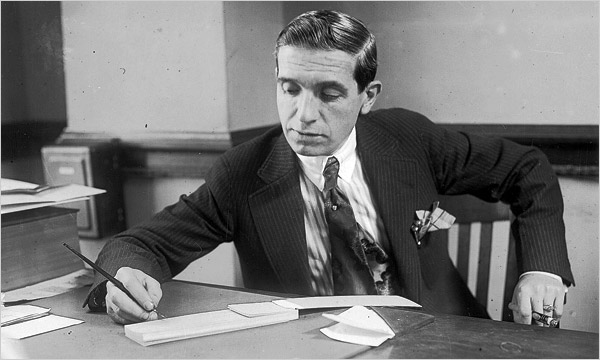
Born in Italy, Charles Ponzi emigrated to America in 1903, where he bounced in and out of prison for a few years. Eventually, he went to work in Boston, where he married and briefly attempted to live on the straight and narrow. But in 1918, Ponzi discovered a loophole that allowed him to profit from international reply coupons (IRCs), which could be bought in one country and exchanged for postage stamps in another. Ponzi realized that stamp prices were different around the world, meaning that IRCs from one country could be sold for a profit in another. He quickly formed a company to do just that, promising huge rewards to investors, who queued up to take advantage of the scheme.
In reality, there were nowhere near enough IRCs to keep up with demand. Ponzi was simply paying old investors with money from newer investors, while raking off just enough to keep himself living the high life. By the time his fraud was uncovered, his gullible investors had lost an estimated $20 million.
Sentenced to five years in federal prison, Ponzi was released in 1924, only to find himself facing another seven years in Massachusetts state prison. Instead, Ponzi fled to Jacksonville, Florida, where he started a fraudulent real estate scheme. Quickly caught and sentenced to a year in a Florida jail, he hopped bail, faked his own suicide, and attempted to flee to Italy. But he was already far too famous to hide his identity and didn’t even make it out of US waters.
After serving his term in Massachusetts, Ponzi was deported to Italy, where he embezzled money from a government job and offered 100 percent returns for investors in his autobiography. In 1939, a cousin got him a job with an airline in Brazil, but he was quickly fired after using the position to become a smuggler. With his health deteriorating, Ponzi eked out a living teaching English and collecting unemployment benefits. He died in a charity hospital in Rio de Janeiro in 1949.
5Eddie Nash Became A Suburban Retiree

Eddie Nash was a powerful underworld figure in 1980s Los Angeles. However, he is best known as the main suspect in the notorious Wonderland murders. On the evening of July 1, 1981, an unknown number of assailants broke into a house in the Wonderland section of Laurel Canyon, Los Angeles, and brutally murdered all four inhabitants. It is widely believed that Nash ordered the killings after the gang burglarized his home with the help of porn star John Holmes, an event famously fictionalized in the movie Boogie Nights.
While Nash was never convicted of the murders, he was sent to prison after a police search of his home uncovered a massive amount of cocaine. His first trial for the Wonderland murders ended in a hung jury. It was later revealed that Nash had bribed the lone holdout with $50,000. A second trial in 1991 fully acquitted Nash of the murders.
But the police refused to let Nash off that easily and would continue to target him for years. In 1995, he was arrested for possessing a ball of methamphetamine but had to be released after lab results revealed it was actually a mothball. In 2000, Nash was convicted under the RICO Act for money laundering and drug trafficking. He also admitted to jury tampering but did not admit to the Wonderland killings.
By that point, the aging Nash was suffering from multiple illnesses and received a relatively lenient sentence. Apparently retired from crime, Nash lives in suburban Los Angeles, where he remains quiet about his previous life and hasn’t been bothered by law enforcement since his RICO conviction.
4Kaiser Wilhelm II Retired To The Country
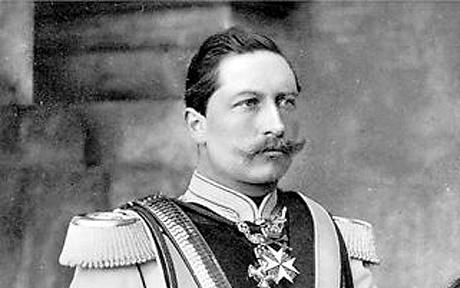
World War I was a shockingly devastating conflict, in which millions of lives were sacrificed for relatively little reason. Of course, most of the leaders responsible for the war never faced any punishment—not even the autocratic Kaiser Wilhelm II, who abdicated his throne and fled Germany in November 1918.
Wilhelm went to the neutral Netherlands, where he purchased an elegant manor in the county of Doorn. The Dutch authorities allowed him to travel freely within a 24-kilometer (15 mi) radius but insisted he seek permission to leave the area. Despite numerous attempts to have him extradited, Wilhelm II never went to trial or faced prosecution.
Instead, he became something of a celebrity, and numerous people visited him. To stay healthy, he would personally chop wood around the property. He also continued his passion for hunting, stocking the estate with game. His first wife died there in 1921 and a year later he married Hermine of Schonaich-Carolath, apparently in the ridiculous belief that marriage to a princess would help his chances of being restored to the throne. Hermine was 30 years younger than her husband, and the marriage was not a happy one. Wilhelm died on his Dutch property in 1941, at the age of 82.
3John Wojtowicz Was Unemployed And Died On Welfare
In 1972, John Wojtowicz had a problem: He was broke. Because of this, he was unable to afford the male-to-female sex change operation his lover, Ernie Aron, was desperate for. So he decided to rob a Chase Manhattan Bank, which naturally went incredibly wrong, ending with a highly publicized 14-hour standoff and the death of his accomplice, Sal Naturale. Meanwhile, Wojtowicz served five years in prison. He also sold the rights to his story, which was made into the acclaimed movie Dog Day Afternoon, starring Al Pacino and John Cazale. Oddly, on the afternoon of the robbery Wojtowicz had taken his accomplices to see The Godfather, starring Al Pacino and John Cazale.
Although he was paid $100,000 by the makers of Dog Day Afternoon, Wojtowicz actually didn’t get very much money, since the courts ordered most of the fee diverted to the victims of the bank robbery. What little money he did receive went toward Aron’s operation. Unfortunately, Aron left him after the surgery, prompting a suicide attempt.
Ultimately, Wojtowicz would never find any success in life. The money he was hoping would come from his film never appeared, despite decades of court battles. He moved back in with his mother and found work cleaning toilets, but his attempt to apply for a security guard job at the very same bank he had robbed didn’t work out. In his later years, he would stand outside the building wearing a shirt reading “I Robbed This Bank” and charge money for autographs. He remained on welfare until his death in 2006.
2Frank James Avoided Jail And Lived Off His Fame
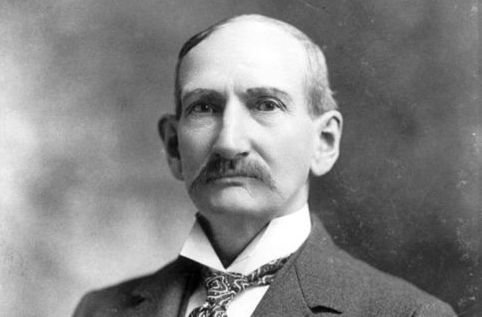
In an era of famous outlaws, none was as notorious as Jesse James. But another key member of the James-Younger gang was Jesse’s brother Frank. And while Jesse was killed by fellow outlaw Robert Ford in 1882, Frank James made it well into the 20th century.
After years of running from the law, Frank eventually decided he had had enough and turned himself in to the Missouri authorities at the age of 40. But in a stunning development, Frank presented his case so skillfully that he was acquitted on all charges, shocking the nation. Now a free man, he worked a series of odd jobs, from circus barker to telegraph operator. He also went on a lucrative lecture tour, regaling audiences with his life as an outlaw. And he invested in one of the many Wild West shows that capitalized on his fame
Finally, he settled down with his family at the James Farm, where he made a living giving tours to visitors. He died in 1915, at the age of 72. At the time, he wasn’t especially wealthy, but at least he was a free man.
1Benedict Arnold Was Widely Despised Wherever He Went
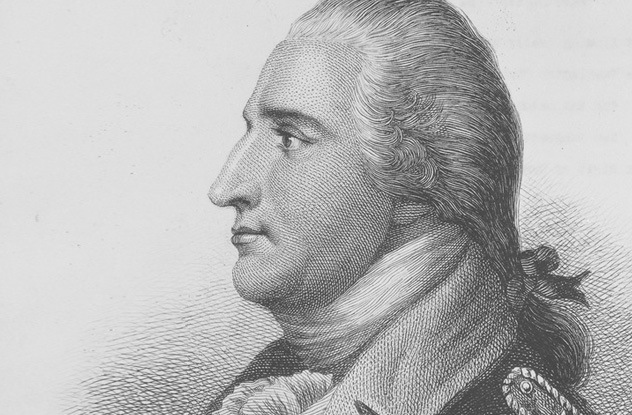
After being passed over for promotion and falling out with his fellow generals, Benedict Arnold came to believe he would never find the honor and glory he deserved on the American side of the Revolutionary War. Instead, he began conspiring with the British. After his plan to let the British capture the crucial fortress at West Point was uncovered, Arnold narrowly avoided capture and formally joined the British army, leading several raids on their behalf.
At the end of the war, Arnold and his wife moved to London, where he was welcomed by George III and the Tory party. However, the ruling Whig party despised him as a coward and a traitor, and blocked him from receiving further military commands, a peerage, or financial compensation for the property he had lost in America.
For the rest of his life, Arnold just couldn’t catch a break. A move to Canada ended with a crowd burning him in effigy. During the French Revolution, he saw that doing business with the volatile French West Indies would be profitable, but the gamble ended with his capture and near-execution. At the last minute, he managed to bribe his guard and escape. Arnold then returned to London and died there in 1801. In 2004, former Connecticut state senator Bill Stanley paid for a new headstone for Arnold, reasoning that “he saved America, before he betrayed it.”
Gordon Gora is an avowed sybarite who enjoys the finer things of life, writing, and living in the South.








